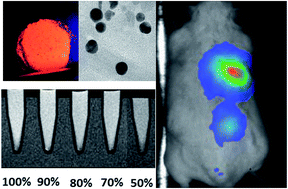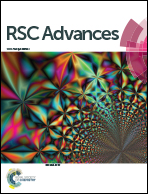Gadolinium oxysulfide nanoprobes with both persistent luminescent and magnetic properties for multimodal imaging
Abstract
Persistent luminescence and magnetic properties of Gd2O2S:Eu3+, Ti4+, Mg2+ nanoparticles have been studied to test the relevance of such nanoparticles as nanoprobes for multimodal imaging. The development of new imaging tools is required to improve the quality of medical images and then to diagnose some disorders as quickly as possible in order to ensure more effective treatment. Multimodal imaging agents here developed combine the high resolution abilities of Magnetic Resonance Imaging (MRI) with another more sensitive technique, like optical imaging, leading to significant possibilities for early detection of diseases and a better understanding of pathologies. Recently, inorganic persistent luminescent nanoparticles (i-PLNPs) have been reported as suitable probes for in vivo imaging that meet difficulties due to the biological environment. The i-PLNPs are first excited by a UV light for a few minutes outside the animal before injection and emit in the border of the red/NIR window for hours after the injection. In this paper, we explore a new chemical composition of host lattice doped with transition metal and lanthanide ions for persistent luminescence that contain a paramagnetic centre conferring additional magnetic properties for use in MRI, and that can be obtained at the nanoscale. Thus, advanced Gd2O2S nanoparticles exhibiting both persistent luminescence and paramagnetic properties have been synthesized and fully characterized. Their luminescent properties were determined as well as their magnetic properties. One compound sample with composition Gd2O2S:Eu3+ (5%), Ti4+ (1%), Mg2+ (8%) presents both optical and magnetic properties suitable for bimodal imaging probe. Indeed, it shows an afterglow in the red range at 620 nm and a relaxivity corresponding to r2/r1 ratio of 1.28.

- This article is part of the themed collection: RSC Advances Editors' collection: f Block Chemistry

 Please wait while we load your content...
Please wait while we load your content...